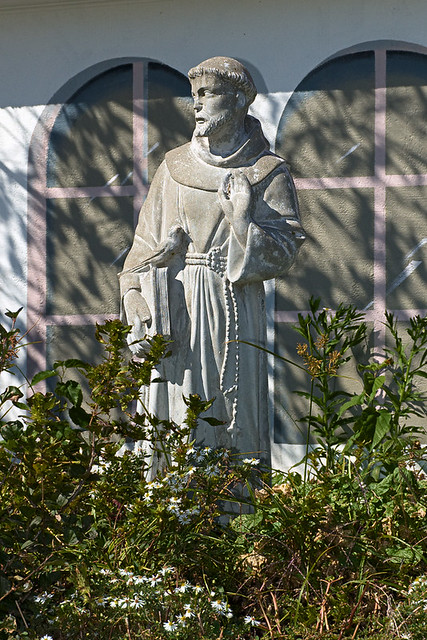
Statue of Saint Francis of Assisi, at Sugar Creek Vineyards and Winery, in Defiance, Missouri.
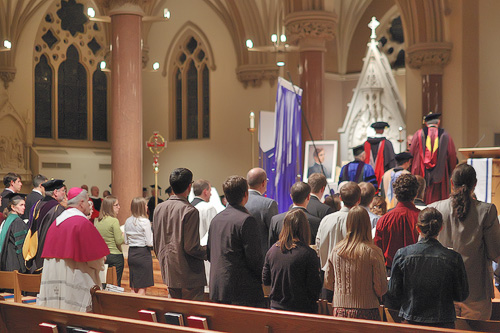
John Henry Cardinal Newman (1801-1890) was the most famous 19th century convert from Anglicanism to Roman Catholicism. During his time as an Anglican minister, Newman exercised an enormous influence on the church of his baptism through his leadership of the Oxford Movement, which was dedicated to returning the Church of England back to its catholic roots.The Oxford movement was ultimately a “paper religion”, having been rejected by the Anglican hierarchy, although it did lead to the Gothic Revival movement renewing church architecture. Disillusioned, Newman gave up everything he had and became a Roman Catholic, gaining far more than he lost. He realized that “the mature articulations of Roman Catholic theology were not corruptions, but in fact organic developments of the apostolic faith.”
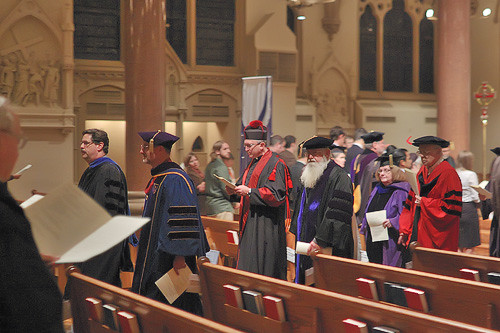
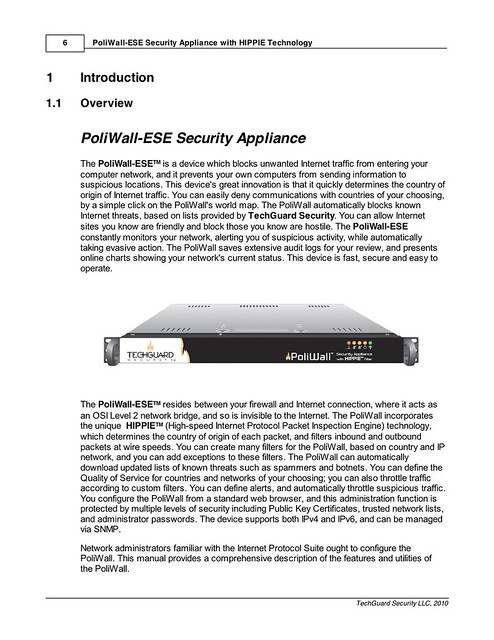
The PoliWall-ESETM is a device which blocks unwanted Internet traffic from entering your computer network, and it prevents your own computers from sending information to suspicious locations. This device's great innovation is that it quickly determines the country of origin of Internet traffic. You can easily deny communications with countries of your choosing, by a simple click on the PoliWall's world map. The PoliWall automatically blocks known Internet threats, based on lists provided by TechGuard Security. You can allow Internet sites you know are friendly and block those you know are hostile. The PoliWall-ESE constantly monitors your network, alerting you of suspicious activity, while automatically taking evasive action. The PoliWall saves extensive audit logs for your review, and presents online charts showing your network's current status. This device is fast, secure and easy to operate.I hope this is understandable and reasonable, as well as reassuring to decision makers who may never be quite sure that their subordinates' purchase requests are for something truly needed.
The PoliWall-ESETM resides between your firewall and Internet connection, where it acts as an OSI Level 2 network bridge, and so is invisible to the Internet. The PoliWall incorporates the unique HIPPIETM (High-speed Internet Protocol Packet Inspection Engine) technology, which determines the country of origin of each packet, and filters inbound and outbound packets at wire speeds. You can create many filters for the PoliWall, based on country and IP network, and you can add exceptions to these filters. The PoliWall can automatically download updated lists of known threats such as spammers and botnets. You can define the Quality of Service for countries and networks of your choosing; you can also throttle traffic according to custom filters. You can define alerts, and automatically throttle suspicious traffic. You configure the PoliWall from a standard web browser, and this administration function is protected by multiple levels of security including Public Key Certificates, trusted network lists, and administrator passwords. The device supports both IPv4 and IPv6, and can be managed via SNMP.This ought to satisfy experts in computer networking, telling them concisely what they need to know. The next paragraph serves as a warning, but not without some hope:
Network administrators familiar with the Internet Protocol Suite ought to configure the PoliWall. This manual provides a comprehensive description of the features and utilities of the PoliWall.Because we live in a fallen world, there will be bosses who are ignorant of the capabilities of their subordinates; workers who cultivate the appearance of expertise rather than its reality; and there are those poor workers who are promoted to a level beyond their abilities. So I attempted to explain concepts basically. Ideally, “Network administrators familiar with the Internet Protocol Suite” would not need any explanations of concepts, rather, they would merely need to know how these things are implemented in this particular device. Undoubtably, there will be administrators who will have little knowledge of the concepts used here, and for the sake of these administrators, their organizations, and for TechGuard's technical support group, I attempted to both add explanation as well as promptings for further reading.
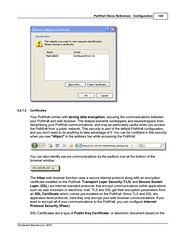
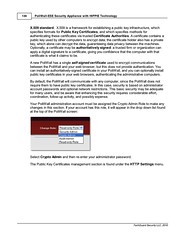
Your PoliWall comes with strong data encryption, securing the communications between your PoliWall and web browser. This feature prevents wiretappers and eavesdroppers from deciphering your PoliWall communications, and may be particularly useful when you access the PoliWall from a public network. This security is part of the default PoliWall configuration, and you don't need to do anything to take advantage of it. You can be confident in this security when you see "https://" in the address bar while accessing the PoliWall:Things written in bold lettering are key concepts, and typically are also found in the glossary, where I provide simple definitions. Upon re-reading this, there is certainly room for improvement, most specifically with fourth paragraph, which really ought to be broken up and rearranged.
[image omitted]
You can also identify secure communications by the padlock icon at the bottom of the browser window:
[image omitted]
The https web browser function uses a secure Internet protocol along with an encryption certificate installed on the PoliWall. Transport Layer Security (TLS) and Secure Socket Layer (SSL) are Internet-standard protocols that encrypt communications within applications such as web browsers or electronic mail. TLS and SSL get their encryption parameters from an SSL Certificate which comes pre-installed on the PoliWall. Since TLS and SSL are application-level protocols, here they only encrypt your web browser communications. If you want to encrypt all of your communications to the PoliWall, you can configure Internet Protocol Security (IPsec).
SSL Certificates are a type of Public Key Certificate, or electronic document based on the X.509 standard. X.509 is a framework for establishing a public key infrastructure, which specifies formats for Public Key Certificates, and which specifies methods for authenticating these certificates via trusted Certificate Authorities. A certificate contains a public key used by other computers to encrypt data; the certificate holder also has a private key, which alone can decrypt the data, guaranteeing data privacy between the machines. Optionally, a certificate may be authoritatively signed: a trusted firm or organization can apply a digital signature to a certificate, giving you confidence that the computer with that certificate is what it claims to be.
A new PoliWall has a single self-signed certificate used to encrypt communications between the PoliWall and your web browser, but this does not provide authentication. You can install an authoritatively-signed certificate in your PoliWall, and you can optionally install public key certificates in your web browsers, authenticating the administrative computers.
By default, the PoliWall will communicate with any computer, since the PoliWall does not require them to have public key certificates. In this case, security is based on administrator account passwords and optional network restrictions. This basic security may be adequate for many users, and be aware that enhancing this security requires considerable effort, coordination, follow-up activity, and possibly expense.
Generally, you ought to create a new user account for each person who will administer the PoliWall. Every person with administrator duties on the PoliWall should have their own username and secret password, and you should assign each user account to one and only one person. No accounts ought to be shared. Each person, when they get a new account, ought to immediately change their password, and never disclose the password to anyone else.or here:
Since the PoliWall keeps extensive and precise records of all its activity, including the actions of administrative users, these personal user accounts add a level of security and accountability, and helps prevent misunderstanding and fraud.
When you assign High Quality of Service, the PoliWall will give priority to outbound traffic to your selected countries.Internet technology, at first appearances, is a bewildering collection of acronyms such as IP, ARP, DNS, SMTP, HTTP, NTP and so on. But it has a rational hierarchical structure, and understanding this structure makes the administrator's job much easier. Very many of these acronyms are merely individual species within a common genus, and once you understand the common features of the genus, then you can deal with all of these species in a simple common manner. Once you understand that, for example, browsing the web or sending email are implemented in a common manner, you can extend your knowledge to hundreds of less familiar services. I thought it was important to include a list of the most common Internet services, despite the fact that it took several precious days of writing: an administrator browsing this list may find that it prompts his memory, so as to avoid possible configuration problems.
High QoS may be useful when:
- The percentage of your used network bandwidth tends to be high on average. Most Internet traffic tends to be bursty, and so high QoS is usually of little benefit.
- Only a small amount of your traffic is given High QoS. If everyone has high Quality of Service, then no one does.
- Much of your low-priority traffic consists of extensive data transfers that would otherwise take up much of your bandwidth for long periods of time.

O how beautiful, how splendid, how glorious did he appear in the innocence of his life, in the simplicity of his words, in the purity of his heart, in his love for God, in his fraternal charity, in his ardent obedience, in his peaceful submission, in his angelic countenance! He was charming in his manners, serene by nature, affable in his conversation, most opportune in his exhortations, most faithful in what was entrusted to him, cautious in counsel, effective in business, gracious in all things. He was serene of mind, sweet of disposition, sober in spirit, raised up in contemplation, zealous in prayer, and in all things fervent. He was constant in purpose, stable in virtue, persevering in grace, and unchanging in all things. He was quick to pardon, slow to become angry, ready of wit, tenacious of memory, subtle in discussion, circumspect in choosing, and in all things simple. He was unbending with himself, understanding toward others, and discreet in all things.A description of Saint Francis preaching to the birds, in the same work by Thomas of Celano:
He was a most eloquent man, a man of cheerful countenance, of kindly aspect; he was immune to cowardice, free of insolence. He was of medium height, closer to shortness; his head was moderate in size and round, his face a bit long and prominent, his forehead smooth and low; his eyes were of moderate size, black and sound; his hair was black, his eyebrows straight, his nose symmetrical, thin and straight; his ears were upright, but small; his temples smooth. His speech was peaceable, fiery and sharp; his voice was strong, sweet, clear, and sonorous. His teeth were set close together, even, and white; his lips were small and thin; his beard black, but not bushy. His neck was slender, his shoulders straight, his arms short, his hands slender, his fingers long, his nails extended; his legs were thin, his feet small. His skin was delicate, his flesh very spare. He wore rough garments, he slept but very briefly, he gave most generously. And because he was very humble, he showed all mildness to all persons, adapting himself usefully to the behaviour of all. The more holy amongst the holy, among sinners he was as one of them. Therefore, most Holy Father, help the sinners, you who loved sinners, and deign, we beg of you, most kindly to raise up by your most glorious intercession those whom you see lying in the mire of their sins.
Francis came to a certain place near Bevagna where a very great number of birds of various kinds had congregated - namely, doves, crows, and some others popularly called daws. When the most blessed servant of God, Francis, saw them, being a man of very great fervor and great tenderness toward lower creatures, he left his companions in the road and ran eagerly toward the birds. When he was close enough to them, seeing that they were waiting expectantly for him, he greeted them in his usual way. Not a little surprised that the birds did not rise in flight, as they usually do, he was filled with great joy and humbly begged them to listen to the word of God. Among the things he spoke to them were these words: " My brothers, birds, you should praise your creator very much and always love him; he gave you feathers to clothe you, wings so that you can fly, and whatever else was necessary for you. God made you noble among his creatures, and he gave you a home in the purity of the air; though you neither sow nor reap, he nevertheless protects and governs you without any solicitude on your part." At these words, Francis himself used to say and those too who were with him, the birds, rejoicing in a wonderful way according to their nature, began to stretch their necks, extend their wings, open their mouths, and gaze at him. And Francis, passing through their midst, went on his way and returned, touching their heads and bodies with his tunic. Finally he blessed them, and them after he had made the sign of the cross over them, he gave them permission to fly away to some other place. Francis went his way with his companions, rejoicing and giving thanks to God, whom all creatures venerate with humble acknowledgement.
But now that he had become simple by grace, not by nature, he began to blame himself for negligence in not having preached to the birds before, seeing that they had listened to the word of God with such reverence. And so it happened that, from that day on, he solicitously admonished all birds, all animals and reptiles, and even creatures that have no feeling, to praise and love their creator daily, when the name of the saviour has been invoked, for he saw their obedience by personal experience.
One day he came to a town called Alviano to preach the word of God. Ascending to where he could be seen by all, he asked for silence. The people became quiet and waited reverently, but a flock of swallows building nests in that place continued to chatter away, making it impossible for the people to hear. Francis spoke to them, "My sisters the swallows, it's my turn to speak now, because you've already said enough. Listen to the word of God. Stay still and be quiet until it's over." To the people's amazement, the little birds immediately stopped chattering and did not move until Francis had finished preaching. Those who witnessed this sign were filled with wonder and said, "truly this man is holy and a friend of the Most High." Praising and blessing God, they devoutly hurried at least to touch his clothing. And it is marvellous how those irrational creatures recognized his affection for them and sensed his love.
You can read the full listing here.Reporting to the Cathedral Rector, the responsibilities of this position include the development and direction of a comprehensive Program of Sacred Music for the Cathedral Basilica, serving both as an Archdiocesan parish, the Metropolitan Cathedral, and the Arch-Episcopal seat of The Roman Catholic Archdiocese of St. Louis. The program is to reflect only the finest music, consistent with the Roman Catholic tradition. The successful candidate will be a practicing Catholic, possess a related four year degree and strong written and oral communication skills. The successful candidate will also act as the Director of Sacred Music for the Archdiocese of Saint Louis.
The position requires the preparation, evaluation, education and direction of all individuals involved in the sacred liturgical music. The position requires the incumbent to function as the Archdiocesan Director of Sacred Music, Cathedral Organist, Archdiocesan and Cathedral Choir director, Coordinator of Ceremonies, Director of the Hand Bell Choir and Director of the Children’s Choir.
The Cathedral Basilica and Archdiocese of Saint Louis offer a competitive benefits and compensation package. Our century old facility is rich in Catholic tradition and offers a challenging professional environment.